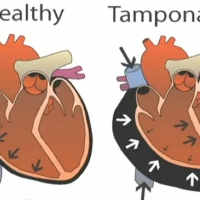When we are met with sudden bursts of emotions, what comes first: the physical or mental reaction?
Since the inception of psychology, emotions have turned into an interesting chicken or the egg phenomena. When good things happen, we smile, but does smiling make us happier?
In the world of psychology and motor neurons, these questions remain unanswered, but countless theories have arisen to explain this almost unexplainable human characteristic. These theories have tried to distinguish the specific firing point within our bodies regarding these emotions, but all of them lack an explanation broad enough that can effectively describe such a diverse human race.
Emotions are a complex mixture of our physical, cognitive, and expressive behavior, but to what extent do each of these matter? Of course, when good, positive things happen to us, we feel a gut-reaction, whether that be smiling or laughing. All of these reactions happen both beneath our skin and within our neurons while also being presented outward and physically.

James-Lange theory
The James-Lange theory proposes that emotion is induced by biological changes and stressors. Simply put, emotions are a cause and effect relationship, highlight the role of the physical body in explaining how we feel. These physical manifestations explain why the Autonomic Nervous System creates increased palpitations of the heart, why our fingers shake in front of a large audience. So, next time your face turns crimson red during an embarrassing moment, you might have to blame the James- Lange Theory. It also explains how medications, such as for anxiety, can curb our worries through a physical process. However, their theory became widely criticized for their ignorance to events such as waves of unexplainable emotions. It completely ignores how some days we wake up and just naturally feel moody or hyper. Our complex emotions tend to be stunted when explained by this theory, but it also serves to explain just how unpredictable our bodies really are.
Cannon Bard Theory
Later on, the Cannon Bard Theory was proposed, focusing on the simultaneous biological and cognitive changes that occured with emotions. With this theory, the hypothalamus sends signals to the cortex of our brain and our Autonomic Nervous System at the same time. This, however, was criticized due to its inability to focus on cause and effect relationships despite being biologically probable. Evidently, it makes sense. Our mind and body works together to concoct both a visceral and emotional reaction, but this neurological coordination isn’t as clear cut as it appears to be.
Two-Factor Theory

Thereafter, Schachter came up with the Two-Factor Theory where physical and our mental interpretations combined to cause an emotion. This biological mix works in a two diverging road manner. Although connected at first, the emotion spirals into different Therefore, people who are more physically inclined would experience a higher range of emotions which can effectively explain the vigor of temper tantrums and crying bouts, which are both equally physical and emotional.
Even today, simple emotions such as frustration and happiness have such a wide range of inexplicable characteristics that psychologists are continually looking into. This speculation is largely due to the inexplicability of us. We are diverse and unique in our own manners, and the way we portray emotions differ from one another, making it increasingly difficult to scientifically explain.
Works Cited
“Cannon-Bard Theory.” SAGE Knowledge, sk.sagepub.com/reference/behavioralsciences/n289.xml.
Cherry, Kendra. “How Does the James-Lange Theory Account for Emotions?” Verywell Mind, Verywell Mind, 10 Feb. 2020, http://www.verywellmind.com/what-is-the-james-lange-theory-of-emotion-2795305.
“Emotions.” Psychologist World, http://www.psychologistworld.com/emotion/.
“James-Lange Theory of Emotion.” Explorable, explorable.com/james-lange-theory-of-emotion.
Learning, Lumen. “Introduction to Psychology.” Lumen, courses.lumenlearning.com/waymaker-psychology/chapter/emotion/.
Check out our popular nervous system articles!
Central Chemoreceptor vs Peripheral Chemoreceptor
Check out these popular articles 🙂
Circulatory System: Blood Flow Pathway Through the Heart
Ectoderm vs Endoderm vs Mesoderm
Circulatory System: Heart Structures and Functions
Ductus Arteriosus Vs Ductus Venosus Vs Foramen Ovale: Fetal Heart Circulation
Cardiac Arrhythmias: Definition, Types, Symptoms, and Prevention
Upper Vs Lower Respiratory System: Upper vs Lower Respiratory Tract Infections
Seven General Functions of the Respiratory System
Digestive System Anatomy: Diagram, Organs, Structures, and Functions
Kidney Embryology & Development: Easy Lesson
Autocrine vs Paracrine vs Endocrine: What are the Differences?
Their Eyes Were Watching God: Mule Symbol
Shoulder Abduction Muscles: Medical Anatomy and USMLE
Cell Membrane Dynamics: Flippase vs Floppase vs Scramblase
Cell Membrane Fluidity: Factors That Influence and Increase the Cell Membrane Fluidity
Psychology 101: Crowd Psychology and The Theory of Gustave Le Bon
Introduction to Evolution: Charles Darwin and Alfred Russel Wallace
Copyright © 2022 Moosmosis Organization: All Rights Reserved
All rights reserved. This essay first published on moosmosis.org or any portion thereof may not be reproduced or used in any manner whatsoever
without the express written permission of the publisher at moosmosis.org.

Please Like and Subscribe to our Email List at moosmosis.org, Facebook, Twitter, Youtube to support our open-access youth education initiatives! 🙂
Categories: Biology, education, History, humanities, psychology, Social Studies














Fascinating!
LikeLiked by 1 person
Thank you for your kind comment, Bill! 🙂
LikeLike
Great analysis!
LikeLiked by 1 person